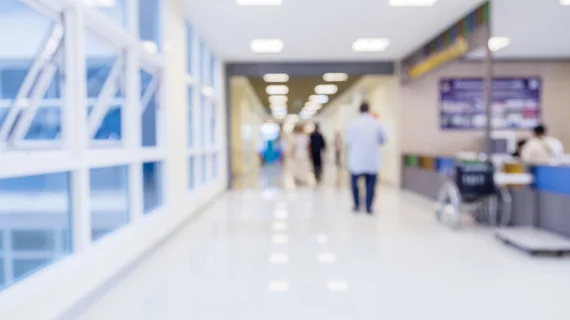Measuring COVID-19's impact on diagnostic tests for diabetes
The early months of the COVID-19 pandemic made a colossal impact on the timing of routine blood testing related to diabetes, according to new data presented virtually at the European Association for the Study of Diabetes (EASD) 2021 Annual Meeting.
The study's authors estimated that more than a million patients in the U.K. either had blood testing delayed or missed out on it altogether over the course of the region's six-month COVID-19 lockdown from March to September 2020.
“As many as a third of COVID-19 deaths in the U.K. have been people with diabetes, and more may be at risk of the worst of the virus’ effects because so many have been unable to manage their diabetes effectively or have gone undiagnosed," lead author David Holland, of The Benchmarking Partnership, said in a statement. “Uncontrolled diabetes wreaks havoc on the body. Failure to focus on the wider implications for people with diabetes and other groups with chronic conditions may put them at increased risk of poor outcomes from COVID-19, as well as longer-term health problems.”
Holland et al. extrapolated data from six testing centers across the U.K., accounting for more than 6% of the total population. Data from the study reveals that 2.5 million diagnostic diabetes tests were missed or delayed during the six-month lockdown.
That came to an average of 400,000 a month, including an estimated 213,000 missed cases of pre-diabetes and 68,500 missed diabetes diagnoses.
In addition, 1.4 million monitoring tests in people with diabetes were also skipped, including more than 500,000 in people with high blood glucose levels, raising the possibility of immediate and long-term complications such as hyperglycemia, heart disease and stroke.
In the study, researchers evaluated the impact of the COVID-19 pandemic on diabetes diagnosis and management, using laboratory data on the key diabetes test, glycosylated hemoglobin (HbA1c) over the preceding three months.
Data was analyzed from six testing centers that supports 3.7 million people, or 6% of the population, between October 2017 and September 2020. The data covered 3.6 million HbA1c tests and 1.7 million people.
The team found that, compared to the 12 months before the lockdown, the number of monitoring tests decreased from 32,000 per month to 19,000 per month during lockdown. Screening tests declined from 46,000 per month to 32,000 a month, and diagnostic tests were cut in half from 31,000 per month to 12,000 per month.
The authors also noted that, during the six-month lockdown, 79,000 monitoring tests were missed among diabetes patients, and 28,500 of those tests would have been in people with poorly controlled diabetes.
That scenario, according to the authors, could lead to missed blood sugar control target levels and an elevated risk of complications.
The team's research implies that this delay in monitoring was associated with an average increase in HbA1c of 2-3 mmol/mol.
Approximately 149,000 general screening tests in high-risk groups were also missed during the lockdown.
“COVID-19 caused more damage than we realized," Holland said, noting that testing volumes were just starting to return to normal in September 2021.
More information about EASD 2021 is available here.
